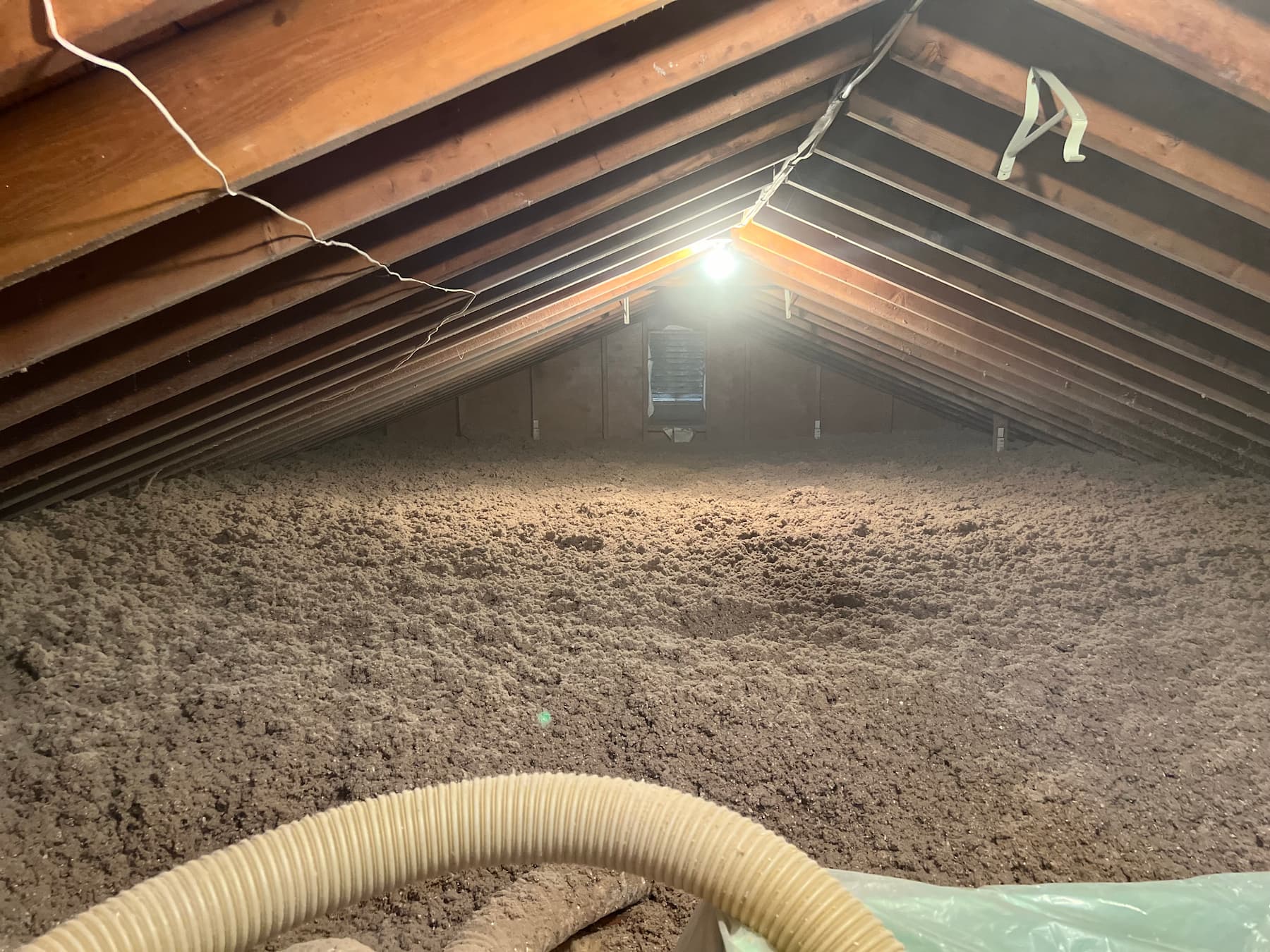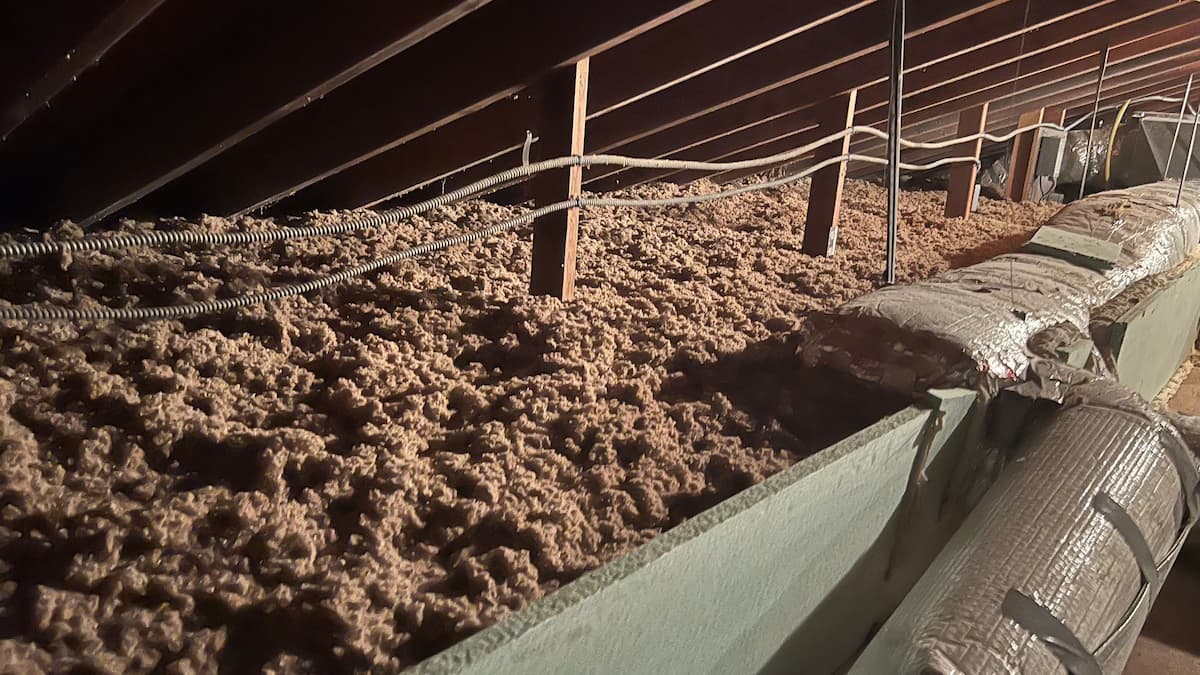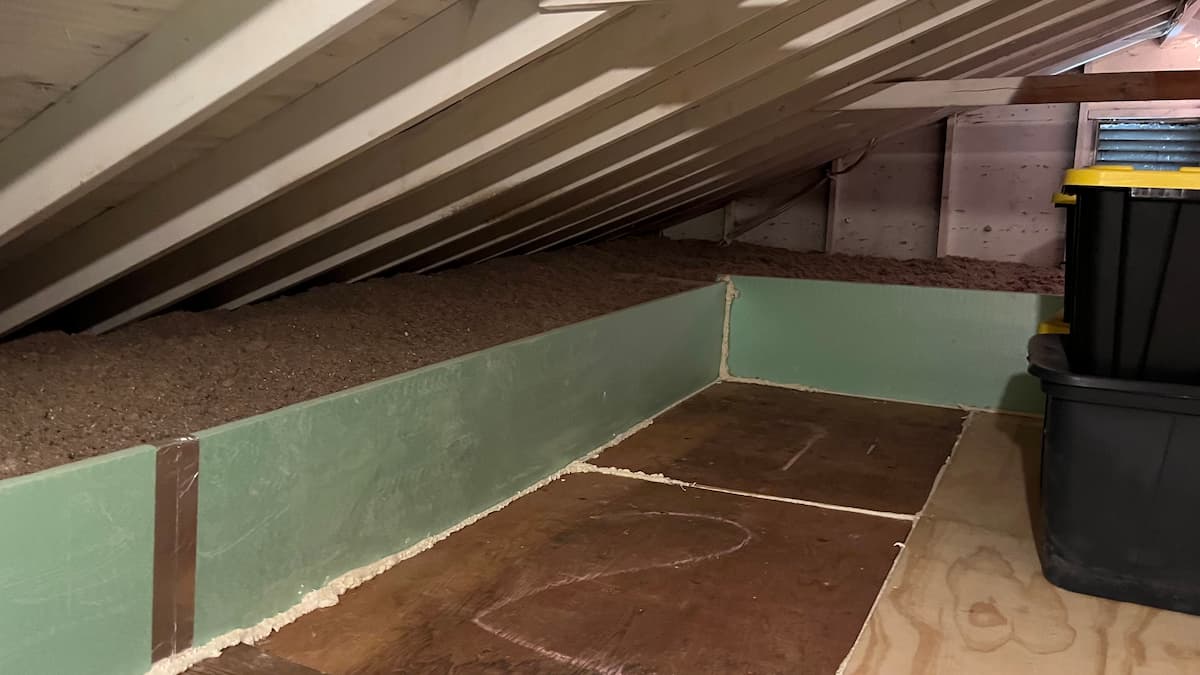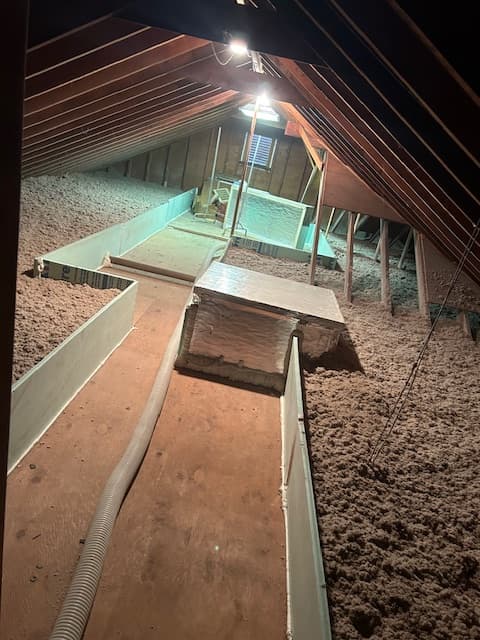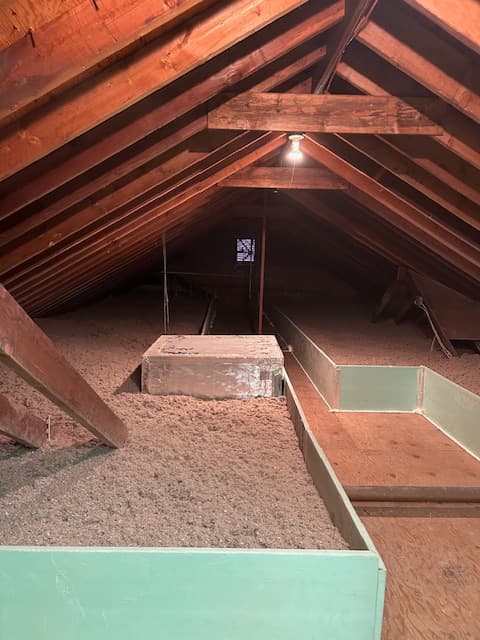Don't Wait To Insulate! Get A Free Estimate:
Cellulose Insulation
Add attic insulation to keep your home energy efficient and comfortable

Cellulose Insulation
Blown in Cellulose Insulation for Attics
Upgrade Your Home’s Comfort and Efficiency with Blown-In Cellulose Insulation
Enhance your home’s comfort year-round and reduce energy bills by upgrading your attic with blown-in cellulose insulation. This highly effective solution helps maintain indoor temperatures—keeping your home warmer in winter and cooler in summer—by reinforcing the thermal boundary between conditioned and unconditioned spaces.
Many homes, especially older ones, have insufficient attic insulation—or outdated fiberglass batts that underperform in cold conditions. Blown-in cellulose can be installed on its own or added over existing insulation, immediately boosting energy efficiency. In fact, research from Oak Ridge National Laboratory shows that topping fiberglass with cellulose not only increases R-value, but also restores performance lost in cold weather.
Unlike rigid fiberglass batts, cellulose fills gaps and irregular spaces, ensuring complete coverage and optimal insulation. According to the University of Colorado, blown-in cellulose outperforms fiberglass batts by up to 38%.
Make a smart, sustainable upgrade—choose blown-in cellulose insulation for a more comfortable, energy-efficient home.

Advantages:
Made of up to 85% recycled paper
Class 1, Type A Building Material – Fire Retardant
Part of the Energy Star home sealing program
Meets ASTM C739 standard for sound barriers
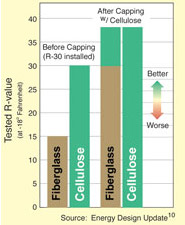


Get a Free Insulation Estimate!
Find out how much you could be saving on your monthly energy bills!

